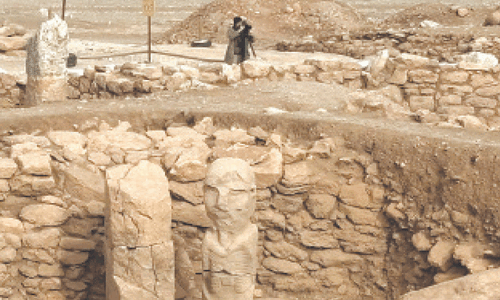DELHI: " Actually, what you must understand is this," said Amin, stroking his long, black beard. "Sufism is not Islamic. It is jadoo: magic tricks only. It is superstition. It has nothing to do with real Islam."
Amin ul-Karim and I were standing outside a kebab restaurant in the crowded mediaeval streets of Nizamuddin, the Sufi quarter of Delhi. To one side lay the destination to which streams of pilgrims were heading: a warren of lanes leading towards the shrine of India's most revered Sufi saint, Hazrat Nizamuddin Auliya. Nizamuddin was a 14th-century Muslim mystic who promised his followers that if they loosened their ties with the world, they could move towards direct experience of God.
Rituals and fasting were for the pious, said the saint, but love was everywhere and was much the surest route to the divine. What was important was not the external ritual of the mosque or temple, but simply to understand that divinity can best be reached through the gateway of the heart.
In this way the Sufis succeeded in bringing together Hindu and Muslim in a movement which spanned the apparently unbridgeable gulf separating the two religions. To this day, while Muslims usually predominate at Sufi shrines, you also see huge numbers of Hindus, as well as the odd Sikh and Christian. Here for once you can see religion acting to bring people together, not to divide them. In modern India, Sufism is not something other-worldly so much as a religious force that demonstrably acts as a balm on India's festering religious wounds.
Only a short distance from the shrine towered a very different Islamic institution, and one that embodied a quite different face of Islam. The Tablighi Merkaz is a grey concrete structure housing the world headquarters of an austere Islamic reformist movement called the Tablighis, to which Amin belonged. The Tablighis are now probably the largest Muslim missionary movement in the world, and advocate a return to the basic fundamentals of the Qur'an.
They greatly dislike Sufism, and believe that it encourages un-Qur'anic practices such as idolatry, music and dancing. This was certainly the view of Amin who, when I met him, had been busy trying to persuade passing pilgrims to turn away from their destination. "We Tablighis don't like tomb worship," he said. "We believe there is no power but Allah."
Here, it seemed, lay a crux - a small but important clash of civilizations, not between east and west, but within Islam itself. Between the ways of the Tablighis and the customs of the heterodox Sufis lay two entirely different understandings of Islam and its relationship with other religions.
Much of my time in India has been spent covering religious violence. My first report in 1989 was from the disputed holy site of Ayodhya, whose Babri mosque was destroyed by a Hindu mob in 1992. Since then the growing communal tensions have been one of the most depressing, and frightening, aspects of modern India.
In an India increasingly polarised into rival religious groups, the gathering of different communities you see at Sufi shrines is all the more remarkable. But the effect of the Tablighis' hostility to Sufism has been to undermine Islam's most tolerant and syncretic incarnation just when that face of Islam is most needed.
There is no doubt that throughout the Islamic world this anti- Sufi movement is growing in strength. Until the 20th century, ultra- orthodox strains of Islam tended to be regarded as heretical by most Muslims; but since the 1970s, oil wealth has been used to spread these intolerant beliefs across the globe. As a result many contemporary Muslims have been taught a story of Islamic religious tradition from which the tolerance of Sufism is excluded.
What happens at Nizamuddin matters as it is an indication as to which of the two ways Islam will go: can it continue to follow the old, pluralistic path, or will it opt for the more puritanical, reformed Islam of the Wahhabis and Tablighis with its innate suspicion - or even overt hostility - towards Hinduism, Christianity and especially Judaism. It is a difficult one to call, but I think all is not lost.
At the entrance of the shrine of Nizamuddin stands Hussein, the old man who looks after the shoes of pilgrims. I asked him what he thought of the Tablighis: "These people are khattar," he said passionately, "extreme and intolerant. Why should they tell people not to pray to the saint? Look at the streams of people coming: everyone in Delhi knows about the power of Nizamuddin. He is God's advocate. He presents our case to the Almighty."
"Don't think the people of India will let the Tablighis take away their saint," agreed Ayesha, a veiled Muslim woman. "People love Nizamuddin - today perhaps more than ever. This shrine will never be allowed to die."- Dawn/The Guardian News Service.
































